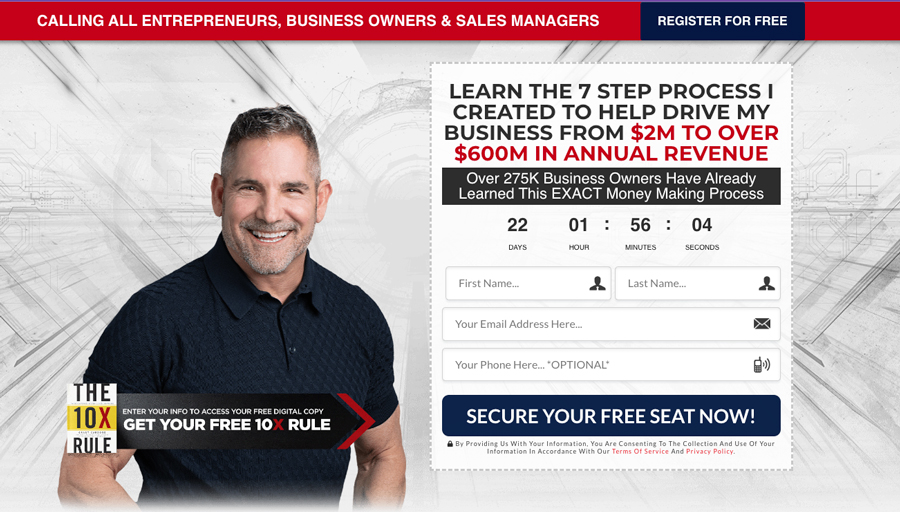Using a Return Policy to Make More Sales
It can be a big deal for a company to change its return policy, especially when it negatively affect customers. Take the recent news that the sporting goods chain REI would be changing its ‘no-questions asked’ policy dating back to its 1938 founding to returns only within one year of purchase.
My take on the change: Good for them. They should weed out those customers who just want to exploit their more-than-generous return policy.
But how you handle returns isn’t as simple as the policy you have down in writing. Let me give you a quick example:
I was recently buying furniture for my offices in Miami and saw a shag rug that I fell in love with. I asked if they would allow me to return the rug and wave the restocking fee if I decided it didn’t look right with my office furniture. They were unwilling to accommodate my request, so I left the shag carpet on their showroom floor along with all the furniture I’d picked out. The same day I went down the street to another store and bought $40,000 worth of furniture and two shag rugs.
The lesson: Don’t let your return policies shag your sales.
Here are six key factors to keep in mind when it comes to your return policy:
1. Your return policy isn’t there to make unhappy customers happy. It’s there to increase sales. Your return policy should result in an increase in sales greater than the cost of returns, restocking, and other costs. The return policy is only successful when the sales force or marketing arm is fully trained to professionally sell your customer the right product or service. Then the return policy is used to increase sales.
2. Make your product sticky so that your customer loses something by returning it to you. This is the ultimate trick to reducing returns. For example, my business, an online university offering sales training, provides users a certification, which enhances their value in the market for completing our training. If the client returns the product under our return policy, they must also return the certificates earned. That is sticky.
3. Have a time limit or cost associated with the return. I don’t care if its 30 days, 300 days or 3000 days, but have a clear policy about the return offer. I would also requirement customers to return the item with all contents in original packaging. This is where you sales team needs to get trained. If they buyer is only taking it home to bring it back later, that is not a sale — that is a wish.
Even mighty Starbucks who offers a free drink for every 15 drinks you buy has a 30-day time limit on the free drink. When we deliver hard products to a customer we include lots of free stuff with our packaging that the buyer must return in order to get a refund.
4. Customers trying to return your product must be treated like an opportunity, not a problem. A customer who contacts your company to return a product can be an opportunity to sell more products. They came to you to solve a problem and don’t believe that problem has been solved. Handle these customers as a priority — not just to give them something, but to sell them something.
I once had a customer who wanted a refund under our policy. I treated him as a priority and turned his request to return a $200 product into a $40,000 sale. The first sale didn’t solve his problem, but the second one surely did.
5. You can’t please everyone. I once had a customer who wanted a refund long after the return policy had expired. After my staff couldn’t satisfy the customer, I got on the phone. He angrily tried to convince me that he would never do business with me again or send me business if I didn’t submit to him. (Never trust people that communicate in anger. They almost never tell the truth.) I said, “Forgive me for dealing with reality here, but it doesn’t seem like you are going to send me business or buy from me again, even if I do accept your return.”
I refused to extend the refund knowing I can’t please everyone. Remember the purpose of the return policy is to increase sales, not make a dissatisfied customer happy. A real customer doesn’t come to you initially to get a return; they come to you because you have a product or service they believe will solve a problem they have. Returning the product later doesn’t solve that problem.
6. Pay close attention to what works. If it doesn’t increase sales beyond the cost and energy of returns, there is no reason to do a return, even if your competitors would. The furniture company I mentioned earlier might want to pay attention to what is happening to its cash register by not providing a return policy on freestanding items like carpets and accessories. They lost a $20,000 furniture sale, their main income, because of a policy that stated they wouldn’t take a return on a $400 carpet sitting on the floor.
Remember, as long as you deal with people, you are going to have requests for returns and refunds. You may as well have a policy that increases your sales.



























